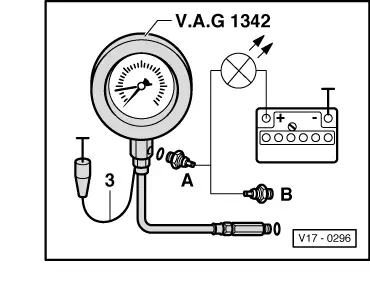Leon Mk1
| Oil pressure and oil pressure switch: verification |

| Special tools and workshop equipment required |
| t | Oil pressure tester -V.A.G 1342- |
| t | Diode test lamp -V.A.G 1527 B- |
| t | Auxiliary measuring set -V.A.G 1594 A- or -V.A.G 1594 C- |
 Note
Note
|
|

|
|

|
